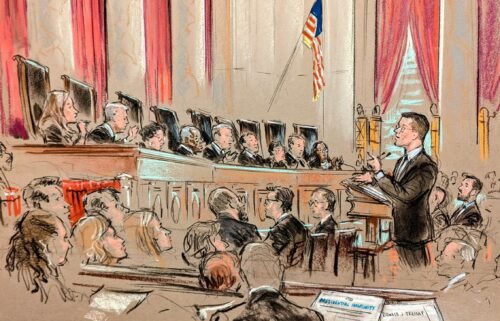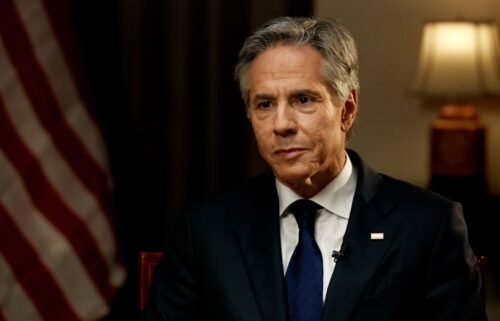Wisconsin’s governor should pardon Brendan Dassey

The Brendan Dassey case in Wisconsin, made famous by the Netflix series “Making a Murderer,” reflects much of what is wrong with American criminal justice: the blundering treatment of juveniles, the insatiable appetite for long sentences, the wickedly uneven quality of defense lawyers and the structural inability of appellate courts to correct for these problems.
In October, Dassey’s lawyer said his case is before Wisconsin Gov. Tony Evers in the form of a clemency petition that asks for either a pardon or commutation of his life sentence. A pardon would wipe away some effects of the conviction and free Dassey, while a commutation would simply shorten the sentence. Evers would be wise to use the ancient tool of the pardon power to achieve justice and mercy.
Brendan Dassey was 17 years old in 2007 when he was convicted of the sexual assault and murder of Teresa Halbach. As Dassey’s defense team pointed out, a major part of the state’s case was an involuntary confession extracted in an interrogation in which Dassey — a 10th grade special-education student — was interviewed without counsel or a parent present until he gave the police the answers they suggested.
For example, here’s the questioning that led Dassey to one conclusion the investigators wanted — that the victim had been shot in the head:
Investigator 1: What else did he do to her? We know something else was done. Tell us. And what else did you do? Come on. (pause). Something with the head. (pause). Brendan?
Brendan: Huh?
Investigator 2: …. can’t
Investigator 1: What else did you guys do. Come on.
Investigator 2: What he made you do, Brendan? We know he made you do somethin’ else.
Investigator 1: What was it? (pause). What was it?
Investigator 2: We have the evidence, Brendan. We just need ya to, to be honest with us.
Brendan: That he cut off her hair?
It was the wrong answer: the investigators wanted Dassey to say that she’d been shot in the head. He finally does, after Investigator 1 says, “I’m just gonna come out and ask you. Who shot her in the head?”
Dassey later recanted the confession. Two federal courts, including a three-judge panel of the Seventh Circuit Court of Appeals, held that Dassey’s confession was involuntary and that he had to be released or retried. However, a majority vote in the full Seventh Circuit Court reversed those decisions, and the Supreme Court refused to hear the case. A provision passed during the Clinton administration, put strict limits on the federal writ of habeas corpus — a petition that allows defendants to challenge the legality of their imprisonment — and stopped the Circuit Court from fixing the mess of this case, which dissenting judge Ilana Diamond Rovner called a “profound miscarriage of justice.”
That leaves clemency as the best hope for Brendan Dassey, who is not eligible for parole until 2048.
But Evers has voluntarily fettered his broad constitutional power to pardon those convicted of a crime by creating both a pardon advisory board and advisory rules for that board in June, even though they are not required by the Wisconsin Constitution. The advisory board is a good idea, but the rules go too far by requiring petitioners to “have completed [their] entire sentence at least five years ago.”
It is a limitation that seems compelled by politics. It is a gamble to issue pardons, especially since political opponents can easily point to a single case of recidivism to accuse a governor of poor judgment or excessive leniency.
Fortunately, the clemency rules do not seem to apply to commutations, although Evers’ spokesperson told the Associated Press in June that the governor is not considering them “at this time.” Regardless of the path taken, the Dassey case calls on the governor to look beyond any cramped interpretation of clemency and consider instead the sweep of history in its broad arc toward justice. It is a moment that clemency was created for.
Clemency has been a part of coherent systems of justice stretching back to the Code of Hammurabi; it has been a device used by kings, presidents and governors to correct the overly harsh instincts that creep into any system of criminal justice. Alexander Hamilton described clemency well in urging his fellow founders to include the pardon clause in the federal Constitution, arguing that “the benign prerogative of pardoning should be as little as possible fettered or embarrassed,” and that without it, “justice would wear a countenance too sanguinary and cruel.”
The list of leaders who granted bold clemencies is lengthy, and their actions have generally gone far beyond forgiveness for those who long ago completed their sentence — the only power that Evers expressly allows himself under the rules he has set out for his advisory board. George Washington’s pardon of the whiskey rebels would not make it under an overly strict reading of Evers’ rules, since they had not completed their sentences at the time. Nor would Thomas Jefferson’s pardon of those convicted under the Alien and Sedition Acts, nor Lincoln’s tearful grants to deserting soldiers after the president met their parents and family members, nor John F. Kennedy’s clemency toward first-time drug offenders serving too-long sentences. Similarly barred would be Ronald Reagan’s commutation of 13 sentences, and Barack Obama’s initiative to commute the sentences of hundreds of narcotics prisoners.
At the state level, Republican leaders including Mike Huckabee and Haley Barbour used their clemency powers for tough cases despite political risk, as governors of Arkansas and Mississippi, respectively. Earlier this year, Tennessee Gov. Bill Haslam freed Cyntoia Brown (who was convicted of a murder committed at age 16). Even President Donald Trump, in one of his better moments, granted clemency to Alice Marie Johnson, who was released from prison while serving a life term for narcotics.
Imagine a circle drawn in the broad plain of history. Inside that circle, having used clemency actively and with principle, are Washington, Lincoln, Kennedy, Huckabee, Obama, and many others, stretching back to antiquity. Evers can enter that circle now. On the conscientious use of clemency, history does not draw a line between conservatives and liberals. Rather, the line is drawn between the bold and the timid.
By placing the clemency power solely in the hands of the executive, both the federal and state constitutions recognize that clemency is meant to be a thing of the gut and soul rather than of rules and process. If Evers draws from the deep well of history and frees Dassey, he will join a great and good tradition.




